Our Trip Down Under
Australia and New Zealand
January 26 - February 16, 2012
(First Leg - Australia)
| Sydney is a city of about 4.6 million people, the largest in Australia, and it is the business hub of the continent. That was our first stop, and Sydney Harbour very much defines the city. Cruise ships and ferries keep the waters busy. | 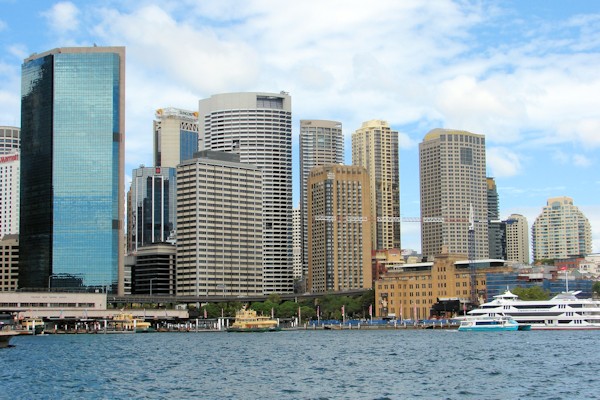 |
| Sydney's Harbour Bridge is one of the icons of Sydney Harbour. It was completed in 1932, and it has a number of superlative descriptions. And one put-down: It is called the coat hanger, but the Ausies call a lot of bridges "coat hanger." | 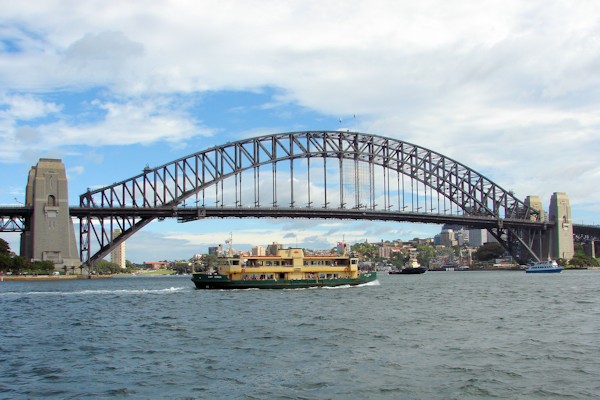 |
| Around 1839, Robert Campbell started working on these 11 storehouses on the shore of Sydney Cove. These kind of places were common in the 19th century, but these are the only survivors, as really nice restaurants. | 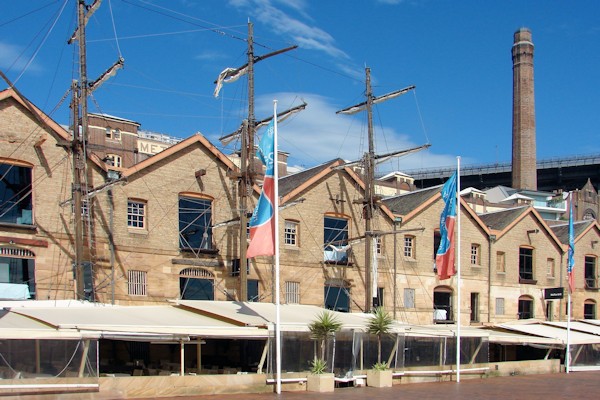 |
| Luna Park was built on the North Shore of Sydney Harbour in 1935, more or less under the north pier of the Harbour Bridge. The park has had a spotty record, open and closed for years at a time. In 1979, the Ghost Train ride caught fire and killed six children and on adult. After about 6 years of investigating and finger pointing the park was rebuilt and re-opened. There have been closures since then, too. | 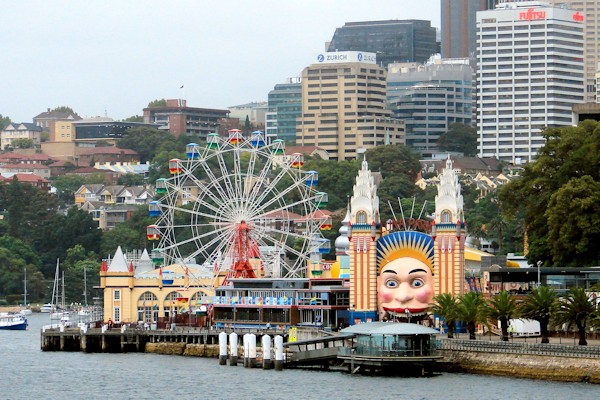 |
| The gem of the Harbour is the Sydney Opera House. It opened in 1973, 16 years after a competition awarded the design to the Dane, Jørn Utzon. Realizing his design was a real challenge with 1961-vintage computers. This is actually two large halls and three small theatres. The Concert Hall seats 2679 people, and the Opera Theatre seats 1507. | 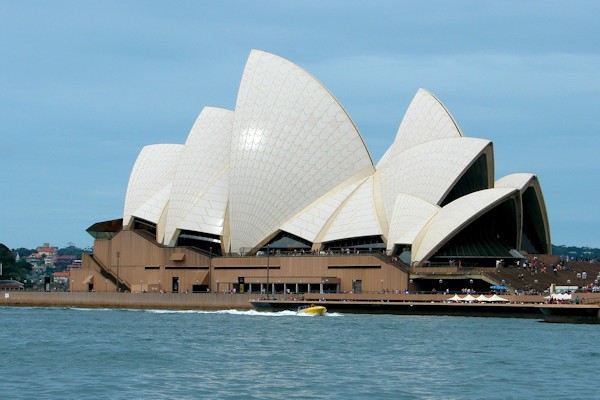 |
| Cadman's Cottage, which dates to 1816, served as home to the coxswains of Sidney Harbor until 1845. The water almost came to the door of this cottage, but now it is 100 feet away. In back of the trees sits the region known as The Rocks. | 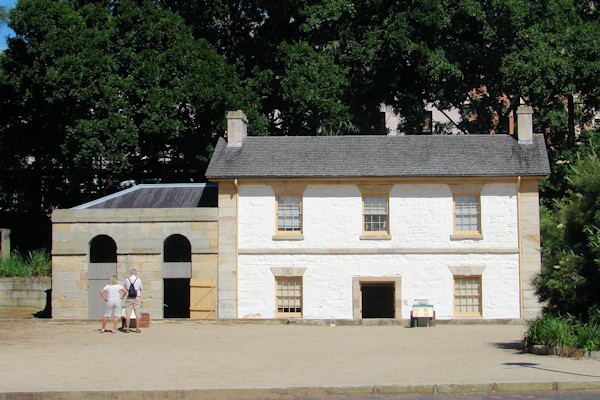 |
| The Rocks is the name given to a region built from local sandstone, starting around 1788. It seems to have served the needs, broadly defined, of the early sailors arriving in Sydney. After nearly of century of destruction, the region has been reborn as an artists and tourists district. This is a typical gentrified row of shops. | 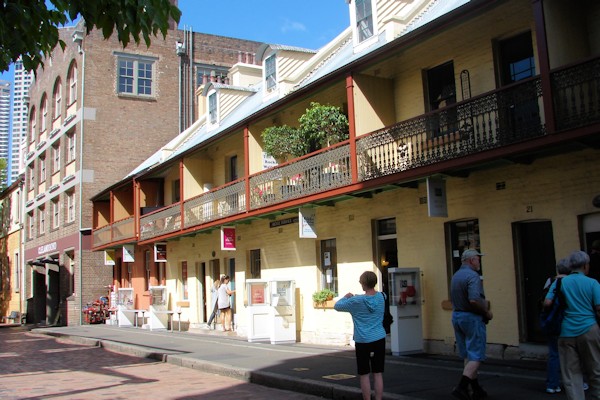 |
| Many, many remodels ago, this was the Mariners' Church, and the oldest part was built in 1859 in Victorian Classical style. Over the years it has been expanded, and it served a church and a haven for visiting sailors, finally being called the Rawson Institute for Seamen in 1910. Now, it hosts nightclubs and bars that overlook the ocean terminal. | 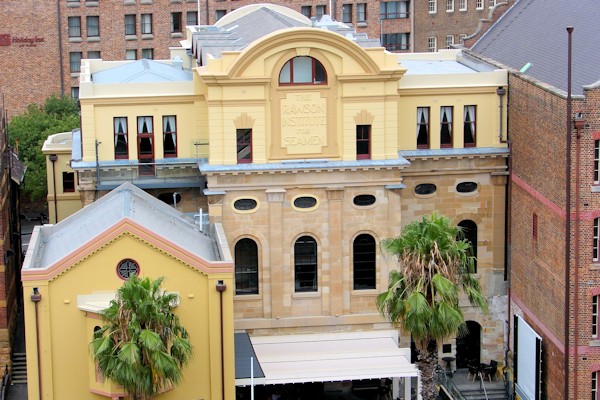 |
| About 30 miles west of Sydney, there is a range called
the Blue
Mountains. The blue comes from the mists that surround the
hills.
This is Australia's answer to our Grand Canyon.
What they
have that we don't is a hidden stand of trees that date back to
Gondwana, 200 million years ago. Note the cable car on its steep descent. |
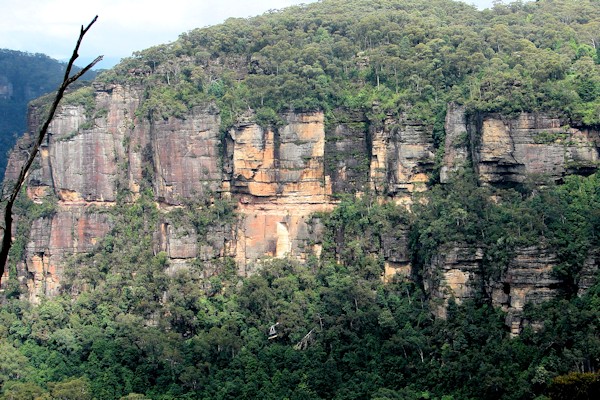 |
| This rock formation in the Blue Mountains is called the Three Sisters. | 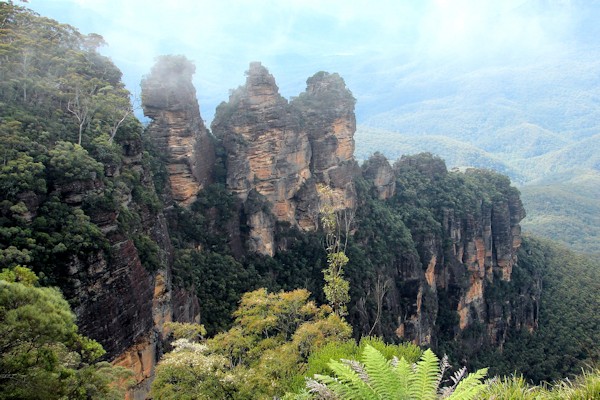 |
| As part of the sight seeing parts of the Blue Mountains, there is world's steepest funicular. This ride goes down at a 52° slope, and that is hairy! | 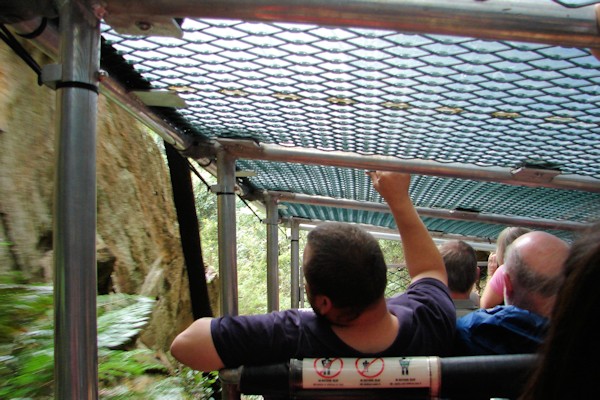 |
| As we approached the entrance to the Featherdale Animal Farm, one of the keepers was standing out front with this baby kangaroo. Clearly, a good start to our visit. | 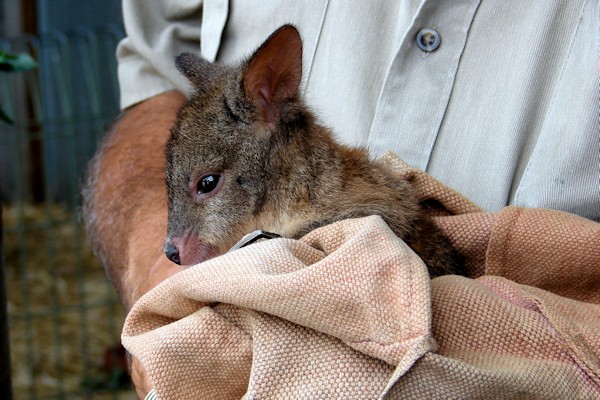 |
| Lots of birds, including pelicans, emus and an anonymous bird that left his dropping on my hat. (Thank goodness for a wide brim.) But the kangaroos and wallabies are signature animals for Australia. These are wallabies, and they are a bit smaller than kangaroos. | 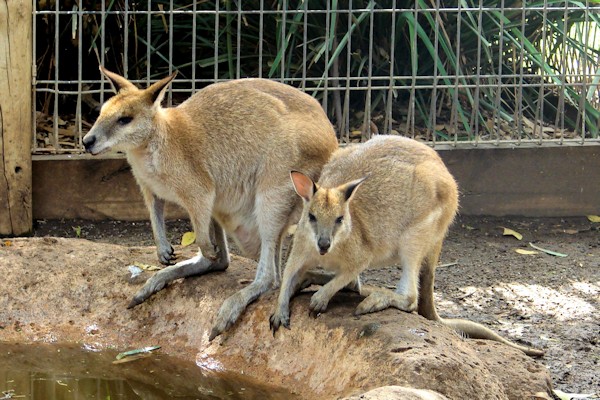 |
| The koala has just been designated as an endangered species. Here at the Featherdale Animal Farm, they didn't seem so rare. There must have been a dozen and a half in various cages, and a few were out where they could be greeted nose to nose. | 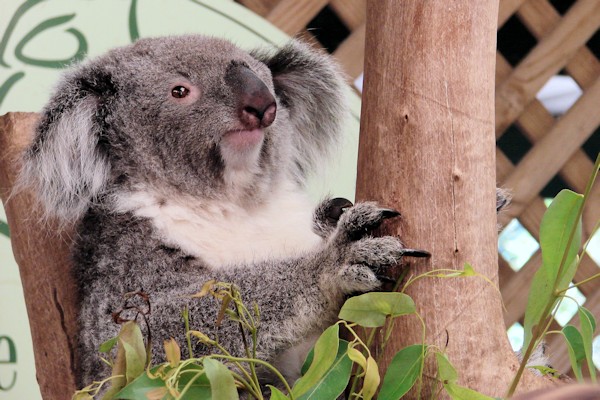 |
| After a few days in the Sydney area, we boarded the ms Volendam in Sydney Harbour. This was our home for the next two weeks. | 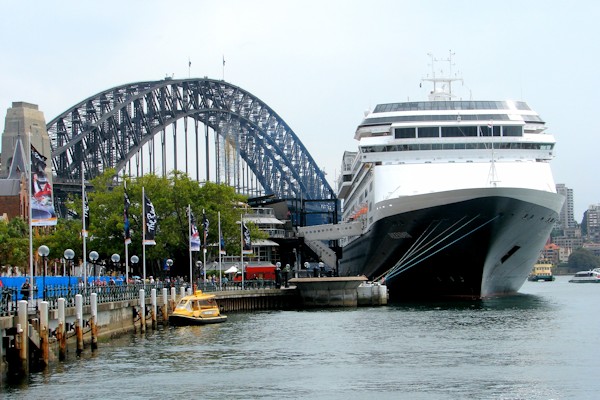 |
| The Diamond Princess was in Melbourne when we arrived. Like Sydney, the town comes right up to the harbor. You can see high rises, which makes sense because Melbourne is Australia's second largest city, with a population of a little over 4 million. | 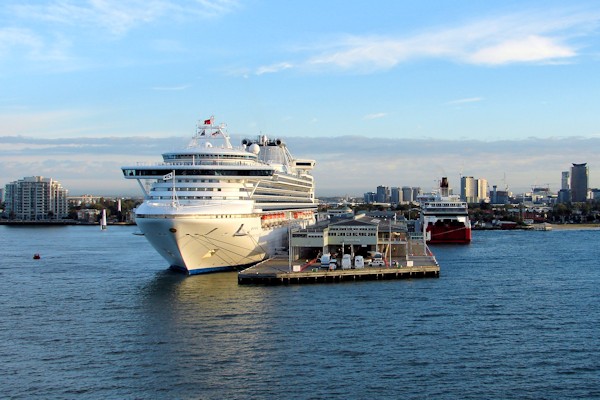 |
| A closer look at the Melbourne Central Business District, with the Federation Square in the foreground. | 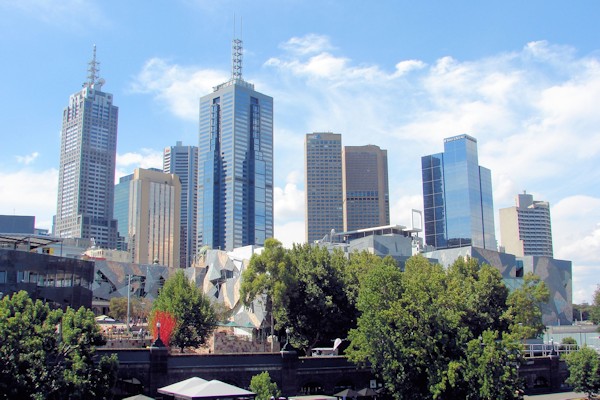 |
| Federation Square is a center for arts and media, created in 2002 to provide a public square. Apparently Melbourne has had problems with their public squares, and this one is not without controversy. Maybe you can see why. | 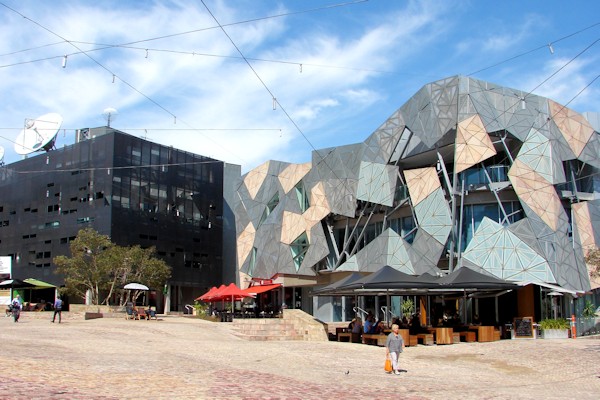 |
| One of the "shards," as the Federation Square pieces are called, includes the Ian Potter Center for Australian Art. This is part of the National Gallery of Victoria, perhaps Australia's preeminent art museum. | 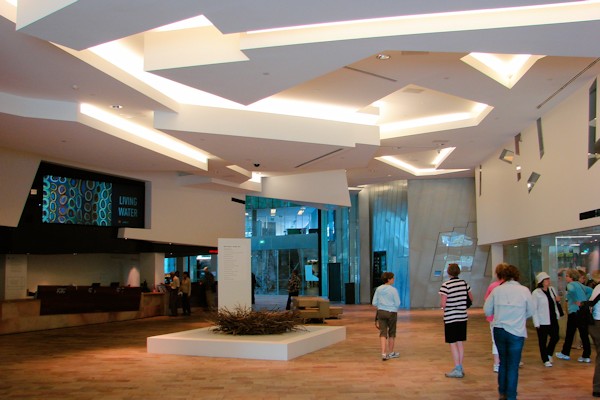 |
| Perhaps we were in the wrong galleries, but the traditional art in the Ian Potter Center was derivative and boring, but the Aboriginal art was vibrant and exciting. This is particularly interesting because the Aborigines don't have a long history of visual arts. | 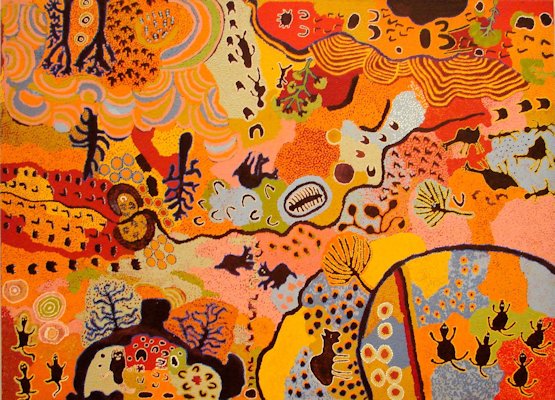 |
| St. Paul's Cathedral is just across the street from Federation Square. In fact, part of the square's design was intended to frame the cathedral better than the prior buildings had. St. Paul's is on the site of the first Christian worship in Melbourne in 1835, but this building was completed in 1891. Anglican, of course. | 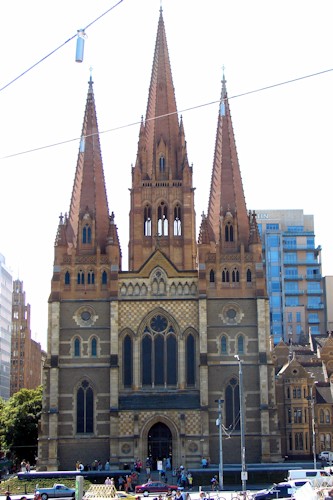 |
| The interior of St. Paul's, with tourists, of course. As I was taking this, the organist was practicing. Not bad at all. | 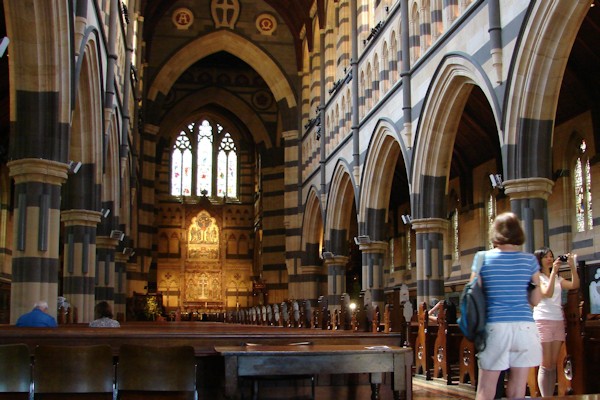 |
| The Flinders Street Station is the busiest rail terminal in Melbourne. This iconic building was completed in 1910, but the style is truly Victorian. The interior, alas, is very functional. | 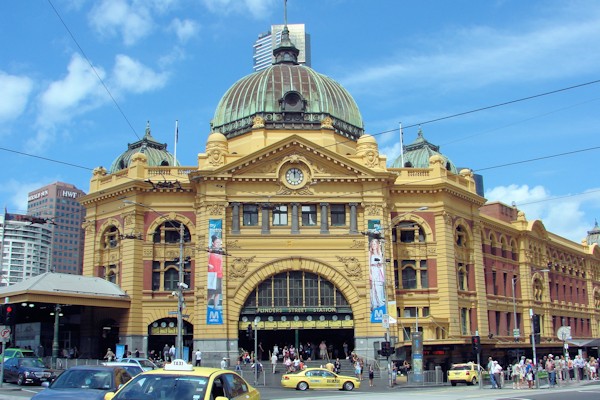 |
| Every town in Australia and New Zealand seems to have its war memorial. Melbourne's Shrine of Remembrance is a notable example, with architecture that recalls classical Athens. The countries were particularly hurt by World War I, and within that conflict, by the losses at Gallipoli. Winston Churchill still gets no respect in this part of the world. | 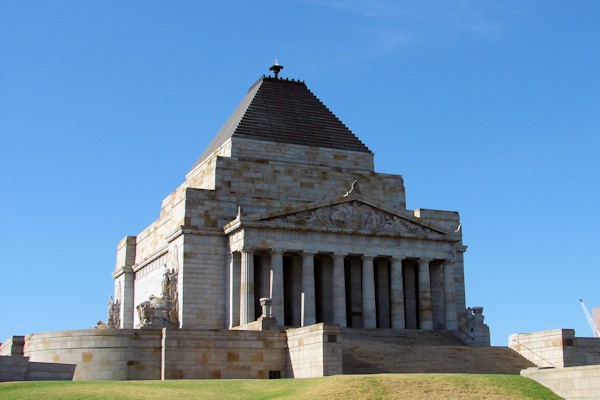 |
| Captain Cook is the explorer that effectively opened Australia and New Zealand to the rest of the world. His cottage was built in 1755 in Great Ayton, North Yorkshire. In a coup of sorts, Russell Grimwade, business man and philanthropist, purchased the cottage in 1933 and moved it to Melbourne, where it was meticulously rebuilt in Fitzroy Park. | 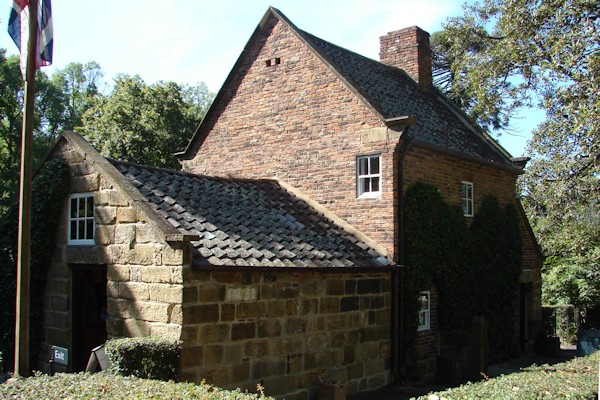 |
| Tasmania is a separate island, but a state of Australia. It is separated from the balance of the country by Bass Strait. We docked in Burnie, and immediately set off up northward along the coast. Our first stop was Rocky Cape National Park, which had been a fishing haven to the original residents. | 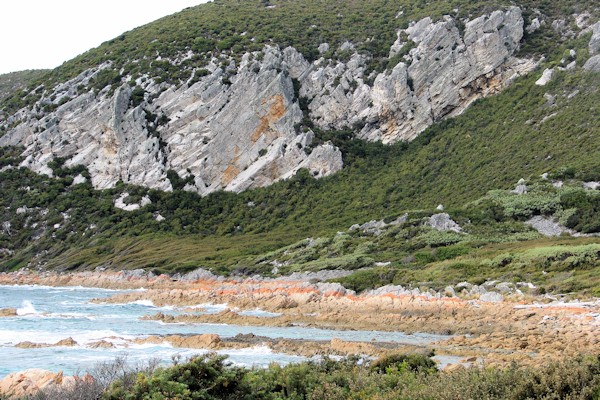 |
| Climbing up a narrow path, we found ourselves at an opening in the rocky cliff. This cave had been a residence for the Aborigines. | 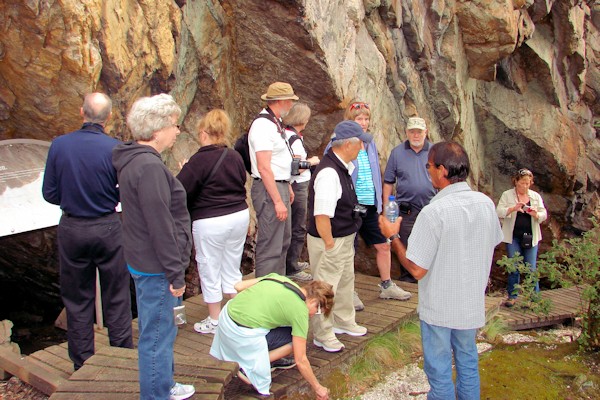 |
| For lunch, we headed off to the village of Stanley, a fishing village with a population of fewer than 500 people. As you can see, the main street caters to tourists. | 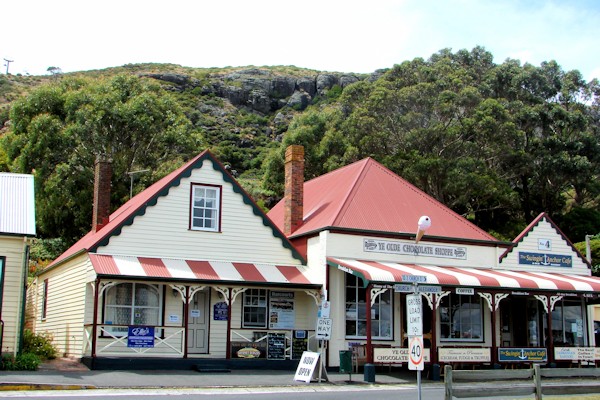 |
| Our Aboriginal guide, Hank, learned the didgeridoo during his travels to central Australia. We got a little concert as part of our visit. | 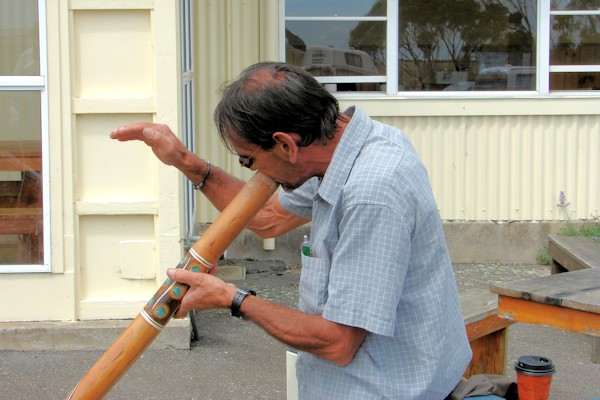 |
| Back to Janet & Bob's Home Page Forward to New Zealand's South Island Skip to New Zealand's North Island | |